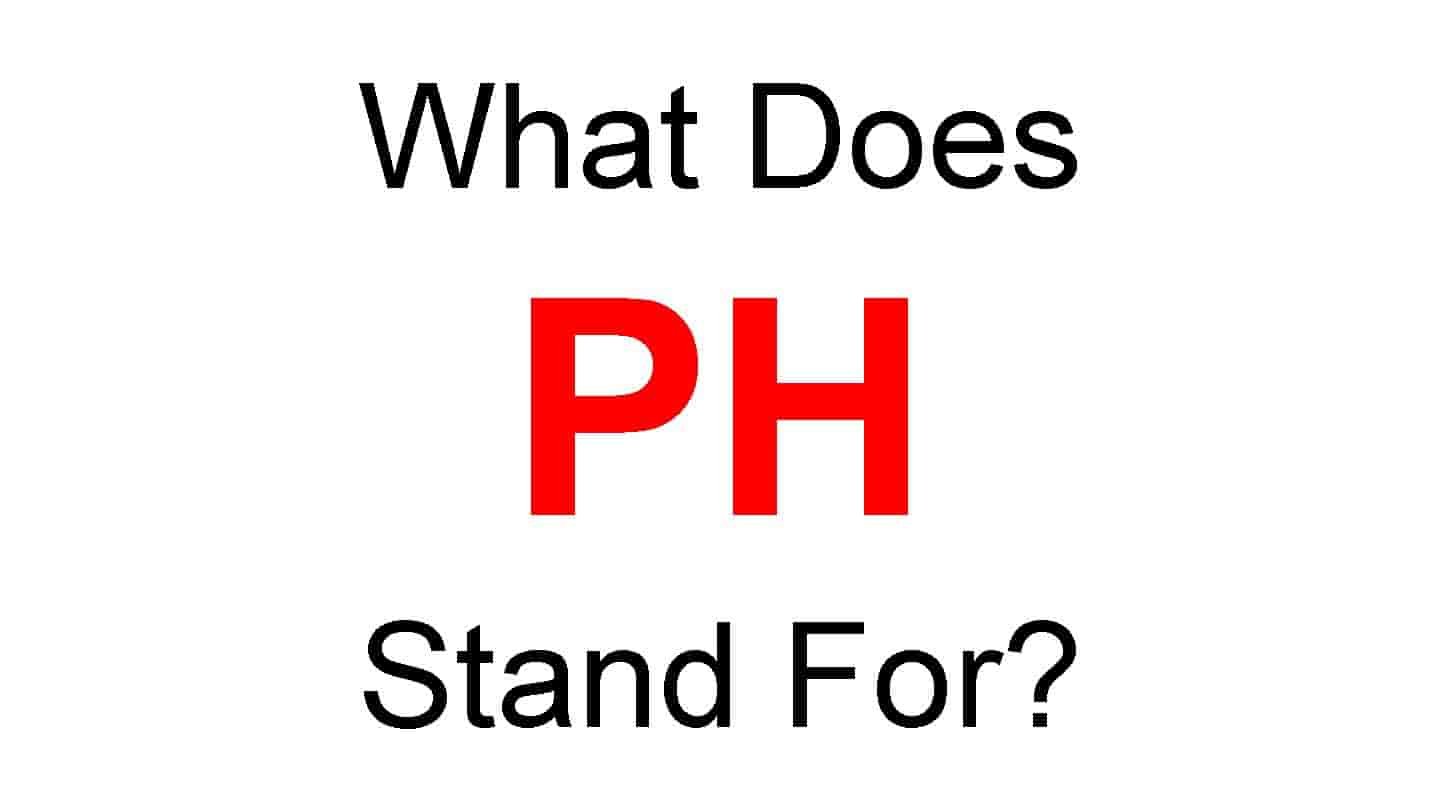Table of Contents
What is the Full form of pH?
The complete form of pH is the Potential of Hydrogen. pH is known as the negative logarithm of H+ ion concentration. Hence the meaning of the name pH is explained as the strength of hydrogen. pH describes the concentration of the hydrogen ions in a solution, which is the indicator of the acidity or basicity of the solution. The pH value on a pH scale varies from 0 to 14.
The concentration of hydronium ion is conveniently expressed on a logarithmic scale. This scale is known as the pH scale. The pH of acids and bases is defined as the negative logarithm (with base 10) of hydrogen ion activity (H+).
PH of Acid And Base
The pH of the solution range from 0 to 14.
Solutions with a pH value varying from 0 to 7 on the pH scale are called acidic solutions.
Solution with pH values ranging from 7 to 14 is essential solutions.
On a pH scale, solutions with a potential hydrogen value equal to 7 are known as neutral solutions.
Solutions with a pH value of 0 are considered to be highly acidic. Additionally, the acidity decreases as the pH value increase from 0 to 7, while solutions with a pH value equal to 14 are known to be strongly alkaline solutions. The acid and base intensity depends on the number of H+ and OH– ions produced. Acids furnishing more H+ ions are known to be strong acids, and vice versa.
Importance of pH
- A living organism can withstand only a limited range of pH changes, and any more pH adjustments will make life difficult. For example: in the case of acid rain, the pH of the water is less than 7. It increases the pH of river water as it flows into a river, hindering marine life’s survival.
- The human stomach contains hydrochloric acid, which helps the digestion of food. Because the stomach releases so much HCl, we feel a lot of pain and discomfort during indigestion. Often the bacteria in our mouth lower our mouth’s pH by generating acids through food particle degradation. Therefore, we are told to clean our mouths with essential toothpaste to prevent decay by maintaining the pH.
- In the case of a bee sting, we feel a lot of pain when the bee injects methanoic acid through its sting. Therefore, we are usually recommended to apply baking soda or other mild bases to the surface because it helps to maintain the surface pH.
More Details : HSC Full Form
History of PH
The concept of pH was first introduced by the Danish chemist Søren Peder Lauritz Sørensen at the Carlsberg Laboratory in 1909[5]. It was revised to the modern pH in 1924 to accommodate definitions and measurements in electrochemical cells. In the first papers, the notation had H• as a subscript to the lowercase p, thus: pH•.
For the sign p, I propose the name ‘hydrogen ion exponent’ and the symbol pH•. Then, for a solution’s hydrogen ion exponent (pH•), the negative value of the Briggsian logarithm of the related hydrogen ion normality factor is to be understood.[5]
The exact meaning of the letter p in “pH” is disputed, as Sørensen did not explain why he used it.[6] Sørensen describes a way of measuring pH using potential differences, representing the negative power of 10 in the concentration of hydrogen ions. The letter p could stand for the French puissance, German Potenz, or Danish potent, meaning “power,” or it could mean “potential.” All the words for these start with the letter p in French, German, and Danish—all languages Sørensen published in Carlsberg Laboratory were French-speaking, German was the dominant language of scientific publishing, and Sørensen was Danish. He also used the letter q in much the same way elsewhere in the paper. He might also just have labeled the test solution “p” and the reference solution “q” arbitrarily; these letters are often paired.[7] Some literature sources state that the “pH” stands for the Latin term pondus hydrogen (quantity of hydrogen) or potential hydrogen (power of hydrogen), although Sørensen’s writings do not support this.[8][9][10]
Currently, in chemistry, the p stands for “decimal logarithm of” and is also used in the term pKa, used for acid dissociation constants[11] and pOH, the equivalent of hydroxide ions.
Bacteriologist Alice C. Evans, famed for her work’s influence on dairying and food safety, credited William Mansfield Clark and colleagues (of whom she was one) with developing pH measuring methods in the 1910s, which had a vast influence on laboratory and industrial use after that. In her memoir, she does not mention how much, or how little, Clark and colleagues knew about Sørensen’s work a few years prior.[12]: 10 She said:
In these studies of bacterial metabolism, Dr. Clark’s attention was directed to the effect of acid on the growth of bacteria. He found that the intensity of the acid in terms of hydrogen-ion concentration affects their growth. But existing methods of measuring acidity determined the acid’s quantity, not the intensity. Next, with his collaborators, Dr. Clark developed accurate methods for measuring hydrogen-ion concentration. These methods replaced the inaccurate titration method of determining the acid content in biological laboratories worldwide. Also, they were found applicable in many industrial and other processes in which they came into wide usage.[12]: 10
Arnold Orville Beckman, a professor at the California Institute of Technology, invented the first electronic method for measuring pH in 1934.[13] It was in response to local citrus grower Sunkist that wanted a better method for quickly testing the pH of lemons they were picking from their nearby orchards.
